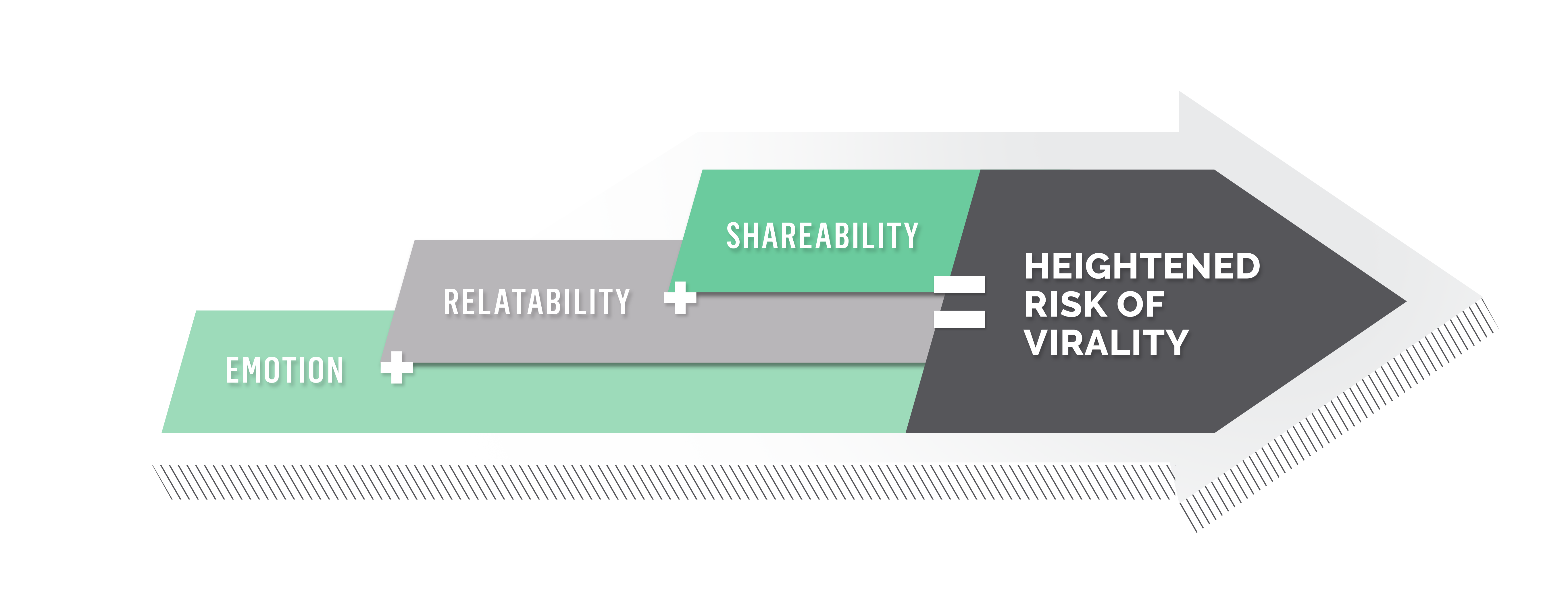A common fear when it comes to issue and crisis management is the uncertainty around virality. Which makes sense. Nobody wants the unwelcome surprise of having an otherwise seemingly insignificant issue go viral* against their organization.
But what if I told you that it doesn’t have to catch you by surprise? That there is a Crisis ReadyTM Formula that can help your team quickly detect the heightened probability of negative virality in real-time.
Well, good news! This formula exists and is now a free Crisis ReadyTM Resource available to you, here!
Crisis ReadyTM Formula for Detecting the Probability of Negative Virality
In order to quickly identity the heightened probability of negative virality, your team needs to understand what makes a negative incident go viral in the first place. This leads to the Crisis ReadyTM Formula for Detecting Negative Virality, which is:

Download this formula for your team, here.
Dissecting the formula
Let’s examine this formula more thoroughly.
Emotion + Relatability
If a negative event is highly emotionally impactful and, if by sharing it the sharer knows that the emotion they’re feeling will relate to others, it is likely to be shared, consumed, related to… shared, consumed, related to and so-forth, increasing its potential for virality.
Shareability
Let’s face it, whether we’re talking about an image, a video, or a hashtag, everything has a share-ability factor in today’s world. In my book, Crisis Ready: Building an Invincible Brand in an Uncertain World, I explore how the hashtag #JeSuisCharlie was the shareable media that ignited the emotional relatability that the western world felt following the dreadful Charlie Hebdo attack in 2015.
Your next steps
Teach your team to be able to quickly assess and evaluate the emotional relatability of a given situation, and then design an internal escalation protocol for them to follow once strong emotional relatability is flagged.
*Virality is relative. It is determined by the influx of unwanted attention to your organization or cause. Its risk is then determined by the potential long-term material impact the situation threatens to have on your brand.

Author of Crisis Ready: Building an Invincible Brand in an Uncertain World, Melissa Agnes is a leading authority on crisis preparedness, reputation management, and brand protection. Agnes is a coveted keynote speaker, commentator, and advisor to some of today’s leading organizations faced with the greatest risks. Learn more about Melissa and her work here.

Thanks for sharing such a valuable and informative post. There are also other risk element for negative virality such as Ethical Considerations, Negative Buzz, Nuisance Factor, and many more.